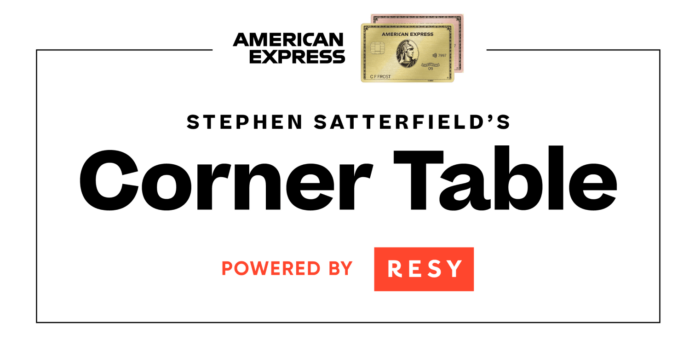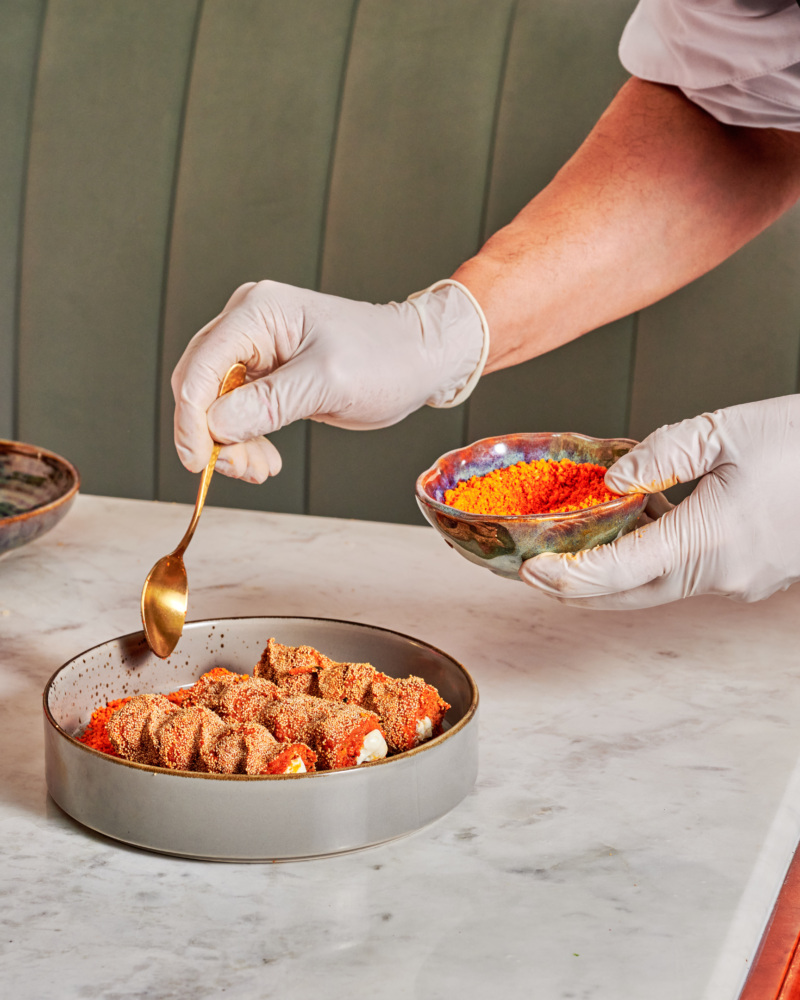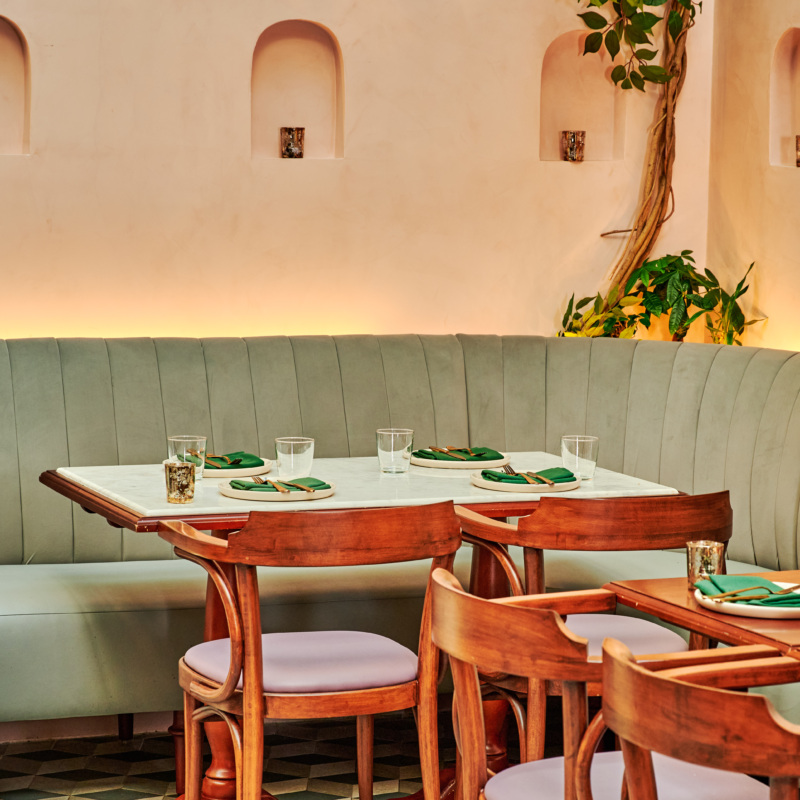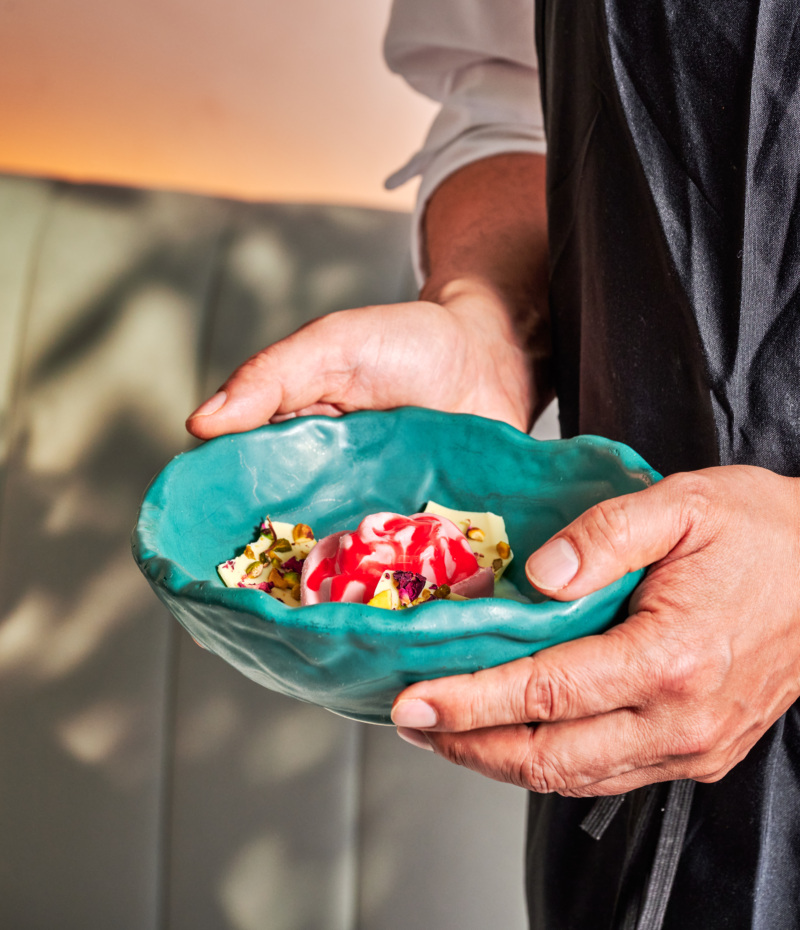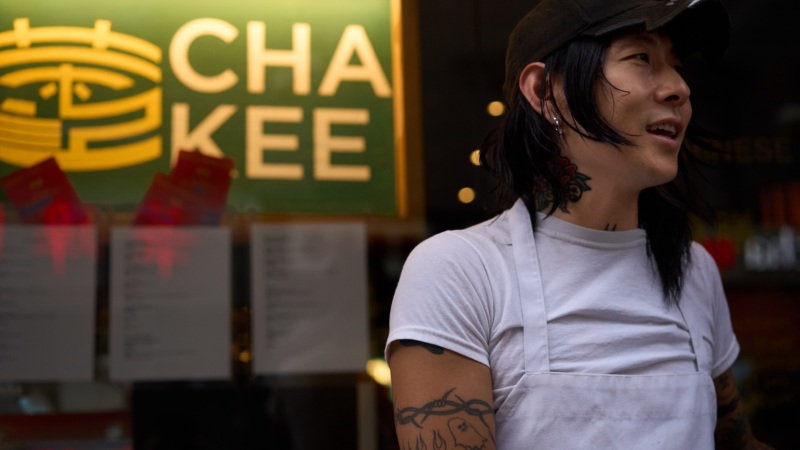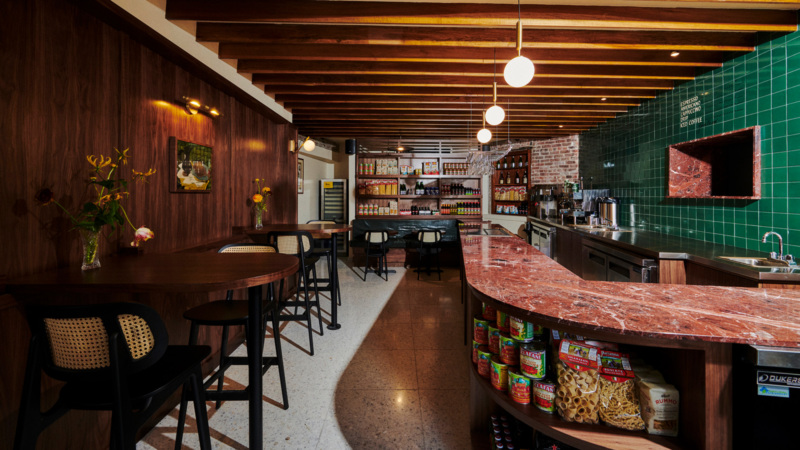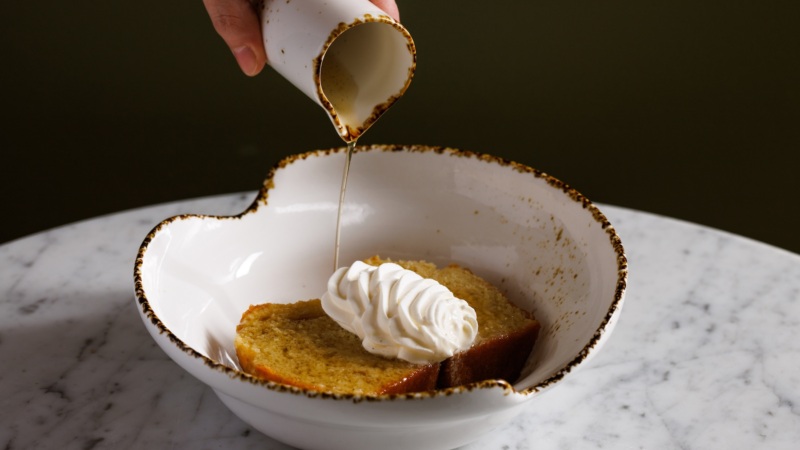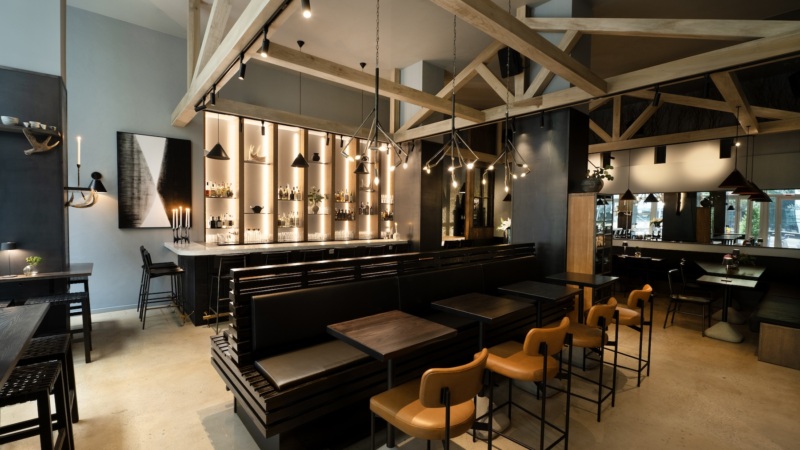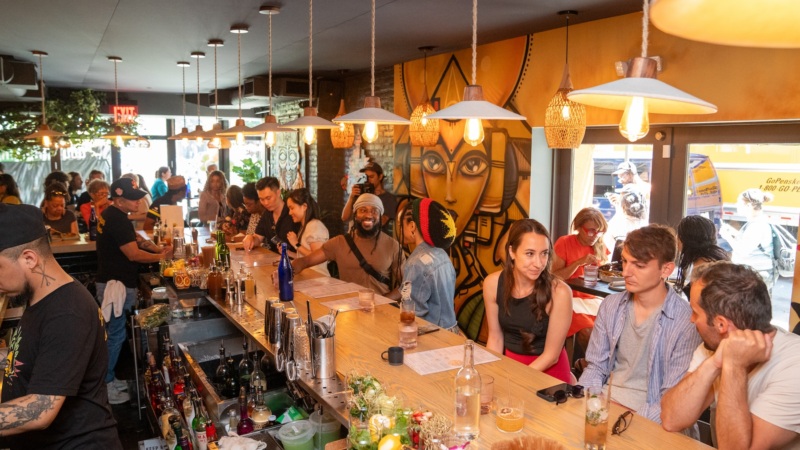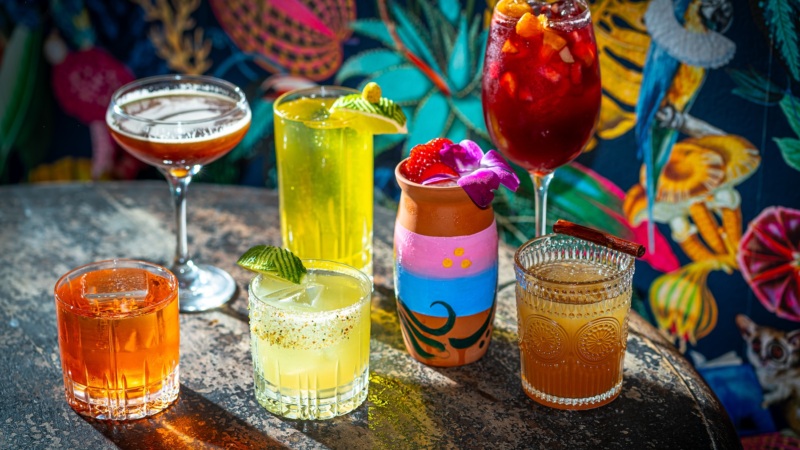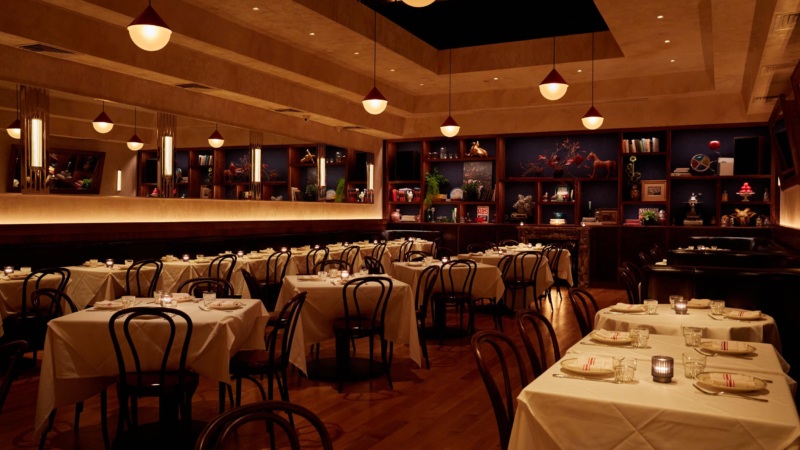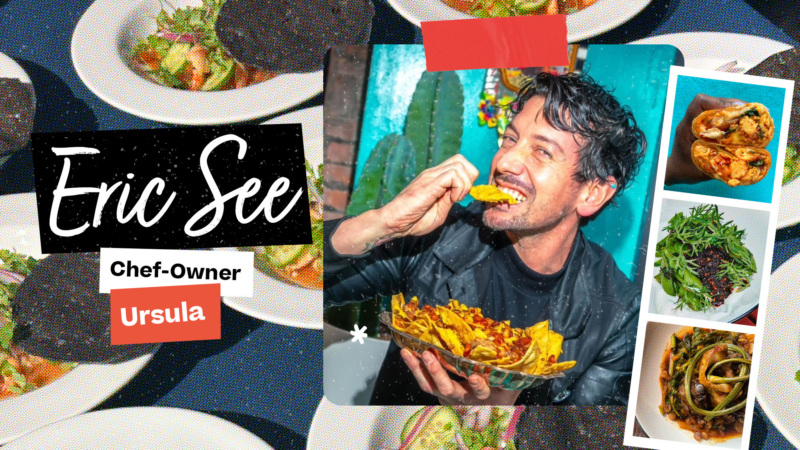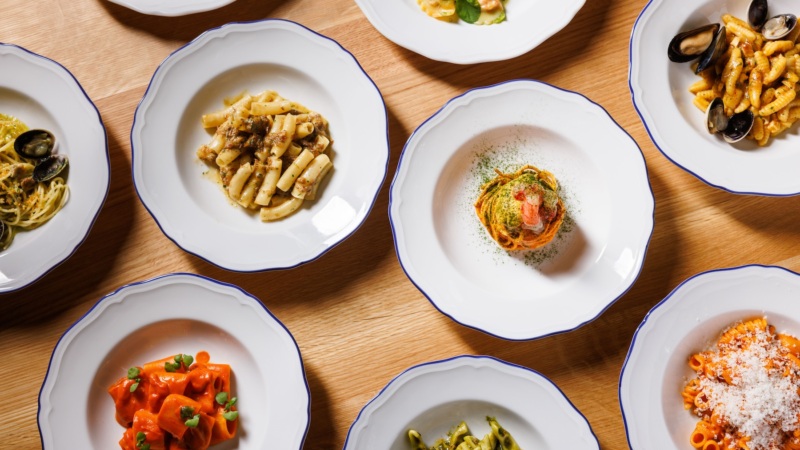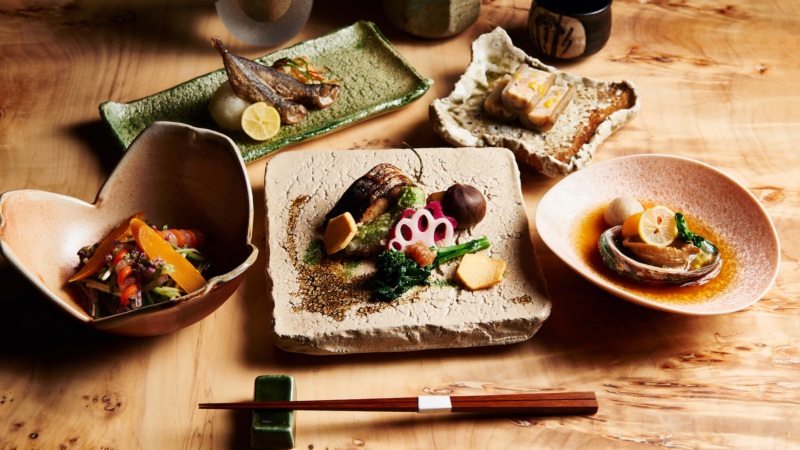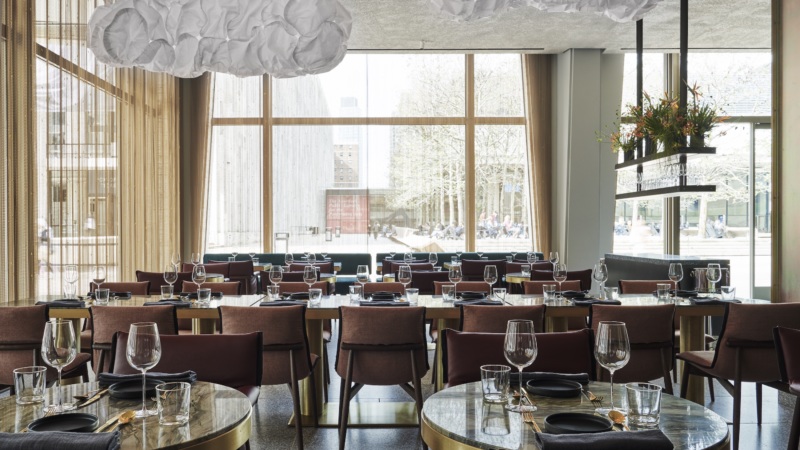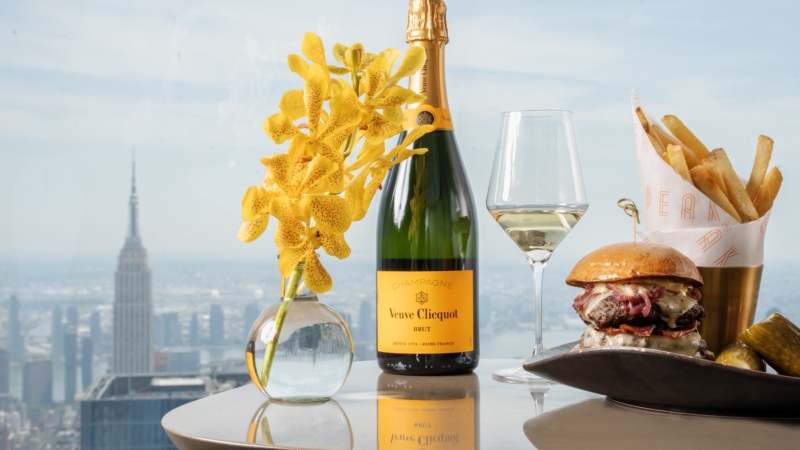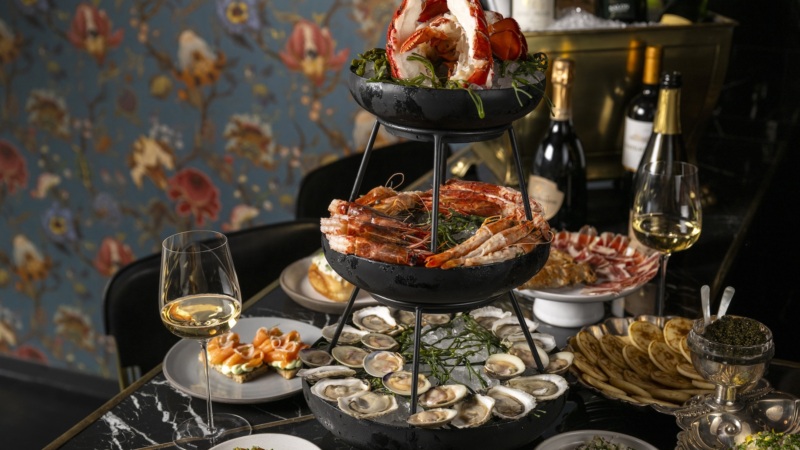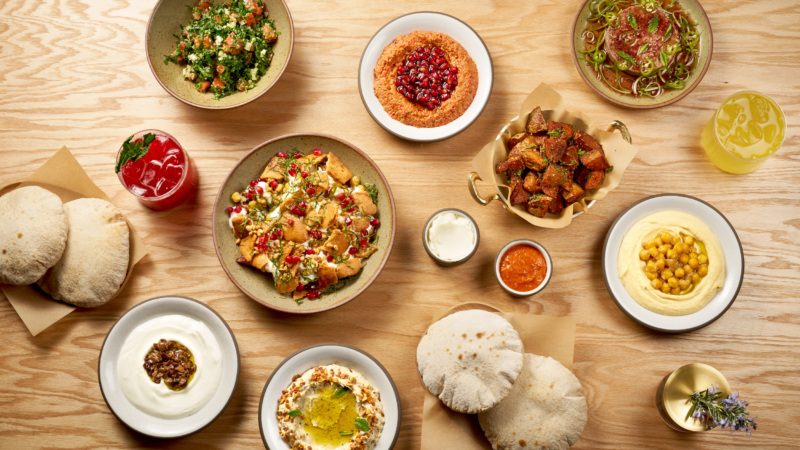
Stephen Satterfield's Corner Table New York
Bungalow Evokes a Sense of Home, As You’ve Never Tasted Before
The American Express® Gold Card and Resy have teamed up with Stephen Satterfield, award-winning host of “High on the Hog,” to bring you Corner Table: a series of exclusive interviews with top chefs and restaurateurs from across the U.S. Discover the personal stories and inspirations of these culinary masters and see how their food is reinventing American dining culture.
Stephen Satterfield is an award-winning journalist, author, founder of Whetstone Media and Hone Talent Agency, and host of “High on the Hog” on Netflix. His book “Black Terroir” is due out in fall 2024.
When you hear that a Michelin-starred chef is opening a new restaurant in New York’s eternally cool East Village, you might assume it will be a place of spectacle and utmost seriousness.
Bungalow is the opposite. It is a restaurant that feels like a guest house, where you’re just as likely to be seated next to a family celebration as a hedge-fund manager. The menu pushes Indian comfort foods to their apotheosis, taking cues from treasured family recipes and regional specialties alike. And the inspiration for every single element — from the family photos that smile on the walls to the hundreds of Indian cookbooks that line the lounge — is not drama or vanity, but love.
“The idea of Bungalow has been a part of all of us since the moment we entered America,” says chef Vikas Khanna. “All the experiences we’ve lived in this country, all of us finding ways to represent our culture, led us to creating a home for people.”
In America, Khanna is best known for earning a Michelin star for NYC’s Junoon in 2011. In his native India, he’s a bonafide celebrity, with a life that seems utterly impossible. He’s host of “MasterChef India,” graced the cover of Men’s Health India, and was even named one of People’s sexiest men. He’s also written multiple novels and cookbooks, written feature films, produced documentaries, founded India’s first culinary history museum on the campus of his alma mater, raised millions of dollars for multiple philanthropic projects, and has a restaurant in Dubai. With what he says is his final restaurant, you would expect him to be shooting for the moon — not turning his eye toward the past and planting his feet firmly to the ground.
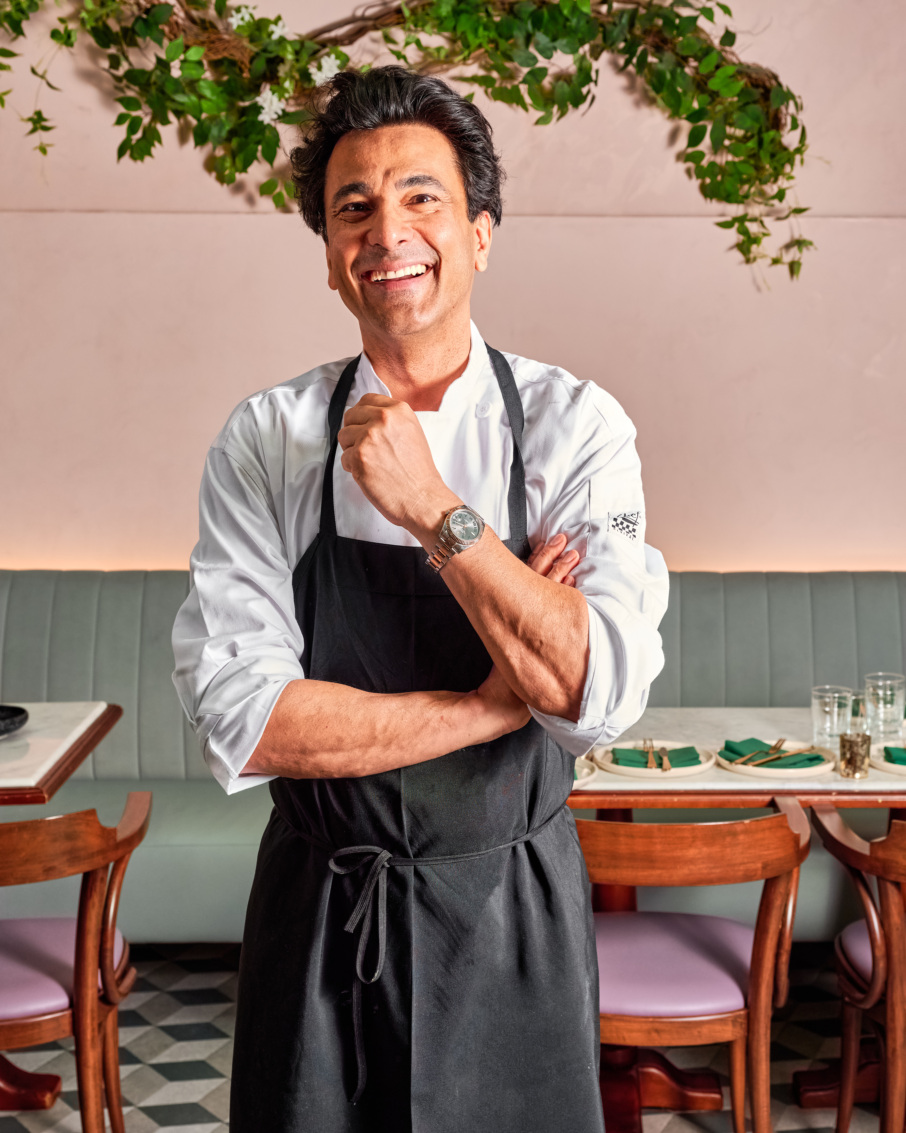
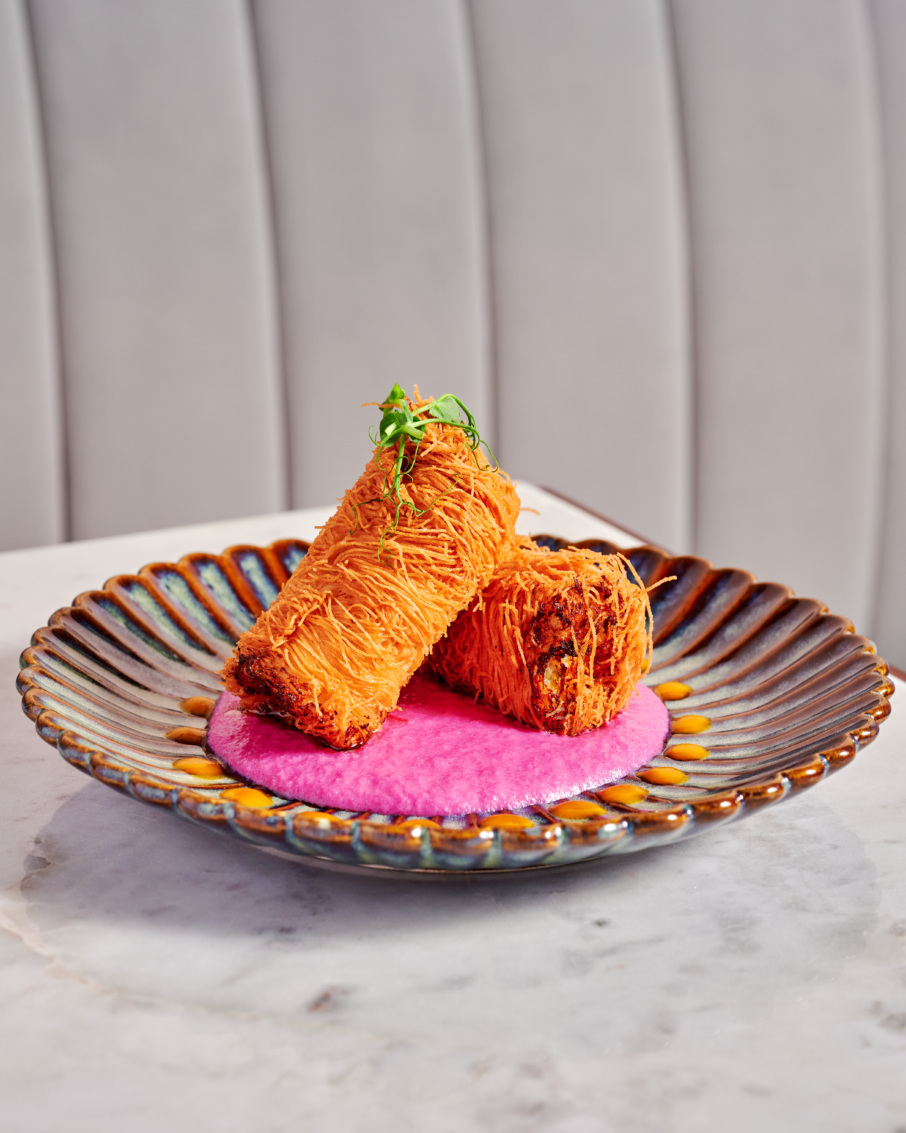
When he first began envisioning the restaurant with restaurateur Jimmy Rizvi, the starting point was the members-only clubhouses of India in the 1920s — much like Rizvi’s acclaimed GupShup drew its initial influence from 1970s Bombay. These exclusive hotspots were called bungalows; an anglicization of the word “bangala,” which refers to mansions and upper-class dwellings.
“Growing up in India, we always wanted to go see somebody in our family that was super rich, and had a big bungalow with a courtyard to play in.” says Rizvi. “We wanted the idea of the social clubs that were set up during colonial times, but didn’t want to focus on the colonial era. It looks like an ancestral home during that time.”
But as the concept of Bungalow took shape, Khanna lost his beloved sister, Radhika. Suddenly, the idea of home stopped being abstract, and turned into something intensely personal.
“She would always say that you are a chosen one, in 1.4 billion people — an entire country feels that they can trust you with their culture and their cuisine,” Khanna tells me, recounting his sister’s sentiments. “Why do you always think of commerce when you’re doing restaurants? You need to do a restaurant for yourself, and create a home for people.”
Bungalow opened on what would have been Radhika’s 50th birthday: March 23, 2024. Khanna’s love for his big sister can be found across the restaurant, from family photos on the walls to the menu.
“So many of the dishes were interpretations of classical dishes that were her favorites. So much of the music is also her favorite. When pain gets transformed into art, it is very holistic, it is very rich, it’s very pure. And I hope I can transcend that moment every single evening, by creating the feeling of home for every single guest.”
Khanna’s love of family and tradition has been the driving inspiration behind Bungalow, with dishes inspired by every single one of India’s 28 states. An Udupi cookbook in the restaurant lounge’s cookbook library inspired the restaurant’s signature spice-roasted pineapple (“almost every table orders it,” says Khanna). There is tender pulled lamb from Rajasthan, tandoori-spiced chicken from Amritsar, and culturally loved classics like daal and biryani.
I caught up with Khanna, as well as Rizvi, to talk about what inspires his many passions, and how he feels all of his successes have been leading to the creation of Bungalow.
Stephen Satterfield: How did you start? And how did you come to associate cooking with a sense of community?
Vikas Khanna: There’s a Sikh shrine just a few blocks from my house where I grew up [in Amritsar]— the Golden Temple — and they have a community kitchen, which serves up 200,000 people, for free, every single day. I was so amazed that when the community comes together, nobody sleeps hungry.
This is what my grandmother taught me — she would always say that food is an equalizer. The richest and the poorest, everybody has to eat. And it’s been ingrained in my head in a very spiritual beginning.
You know, as a diaspora we might be among the richest and the most progressive and most educated right now in America, but there is nothing which replaces the grandmom’s ancestral home. It’s a whole different energy. When you walk into Bungalow, it looks like an old house of an Indian heritage with old carpets, those chairs made out of cane, a huge veranda with so many family images everywhere. To make people feel that, to know they belong to something so powerful — so much bigger than all of us. That’s what we’ve created.
Digestif: A Few of Vikas Khanna’s Favorite Things
Bungalow’s chef shares some of his inspirations.
MUSIC TO COOK TO
Any song of SRK.
WHERE TO EAT ON A NIGHT OFF
Veselka. I sit there for hours and eat the same things every time: vegetarian borscht, and fried pierogi with applesauce and sour cream.
BEHIND THE RESTAURANT NAME
Bungalow means a mansion or a large home. In India, our grandparents’ homes are like these, with open spaces, large kitchens, big feasts and festivities all year round.
MOST LOVED INGREDIENT
I love cooking with curry leaves. They are generally used in South Indian cuisine; I fry them in oil to create an infusion. I love to add half to the oil and fry them to create an amazing undertone of flavor, and I use the remaining half during the cooking process of the sauce. This adds a bit more flavor of these magical leaves.
Tell me about the cookbook collection in Bungalow’s lounge.
Khanna: The initial cookbooks were from my personal collection. There’s a chef in India called Sanjeev Kapoor. He’s one of the first people [in India] to be on television, and the first person we saw who wrote books, who became my voice when I was growing up. His book was the first book which went into the library. But we keep getting gifts every day. A lot of Indian chefs are releasing new books and send us copies. It’s amazing to create something in New York City where they feel that, you know, they’re a part of something. All the chefs feel that a piece of them, or their story, is in Bungalow.
And what about about the photos found throughout the restaurant?
Jimmy Rizvi: Whenever we see images of India post-independence, there was so much pride, because people had fought for their very identity. In that time, only the rich had the privilege of getting photographs done, because it was very expensive. There are so many of these original pictures of families dressed up in their ancestral clothes throughout the restaurant, which celebrate our identity, not the colonial one. There are pictures of our families; of us growing up in India.
Khanna: There’s my pictures of my sister; pictures of my mother’s wedding. So many celebrations! We want people to remember that we belong to such a strong heritage. It reminds so many of our guests of having these kinds of images in their homes. It makes them feel they belong to a huge thread of lineage. I have seen their reactions, and it’s very emotional. Every time I walk into the restaurant, [the photographs] make me feel that there is a responsibility, in a way when you belong to such a rich history of culture.
You say your favorite dish on the menu, Ammi’s Lamb Chops, is inspired by Jimmy’s mother.
Khanna: Ammi is a home cook, who is I think one of the best chefs in the world. She comes to the kitchen while I’m marinating the lamb chops, and she’s asking me, “Why are you using so many spices? You just need two — green papaya for tenderizer, and flavor it with green mango powder.” I would have never thought to use that! Dried mango powder adds sourness without adding any moisture, which is amazing, because now you can sear it. Every time somebody takes a first bite, their reaction is, how is it even possible?
It is so emotional for me, because the way that legendary Indian cooking is still happening is in Indian homes — not in restaurants. I was able to translate one dish from their home and bring it to the restaurant. It just sticks with me every time, and blows the mind away the way people respond to it.
As a multi-hyphenate, how does this restaurant fit into your life?
Khanna: Jimmy asks me, “How can you have so much energy to meet like 300, 400 people every night?” I’m like, people give me this energy. People have brought their gifts, people have brought their food they cook that they want you to try. It’s such an emotional connection for these people to have a sense of belonging. People fly from all over the world every night. And I’m like, this is it. This is it. This is what I wanted to achieve and the universe has given me this opportunity.
You’ve succeeded with your restaurants, on TV, in film, and so on. What comes next?
Khanna: I feel there’s a much bigger family which awaits my help. There is pain which I have in my heart of seeing so much hunger back home in India while the world celebrates my craft here. That pain dominates over me every day. I feel that if I put that energy of running Bungalow into helping change the index of malnutrition in India, that would be my biggest achievement. To use all this energy and this synergy from Bungalow to create something which can change the hunger index of the country. And for me, that would be much bigger than having any Michelin stars or any accolades from the Times. Not everyone gets the privileges I’ve been given, and there might be a bigger purpose for me. And if I just focus on the business, I might not be able to see that.
My sister said, “Use your energy in something else, but don’t be negative.” She said, “The universe is going to give you a sign.” The universe puts it all together for me; I don’t. Jimmy coming in my life, I feel it’s a gift of universe. His mom coming in my life — I feel that there was a missing gap, she filled it up. And the family of Bungalow filled up all those gaps for me for all that pain I was going through of losing my sister in my own arms. Everybody came forward, sent by the universe.
And the universe is sending ways so that I can do some amazing work in years to come, where I can focus on the nutrition index of the country. And I hope what I learned from my grandmom that if everybody contributes a little, nobody sleeps hungry. Maybe I can apply that on a magnitude of things which is yet to come.
Produced By

Project Credits
- Writing Stephen Satterfield
- Editing Allison Robicelli
- Photography Doaa Elkaby
- Creative Director Celine Glasier
- Brand Liaison Marisa Dobson
- Writing Stephen Satterfield
- Editing Allison Robicelli
- Photography Doaa Elkaby
- Creative Director Celine Glasier
- Brand Liaison Marisa Dobson

